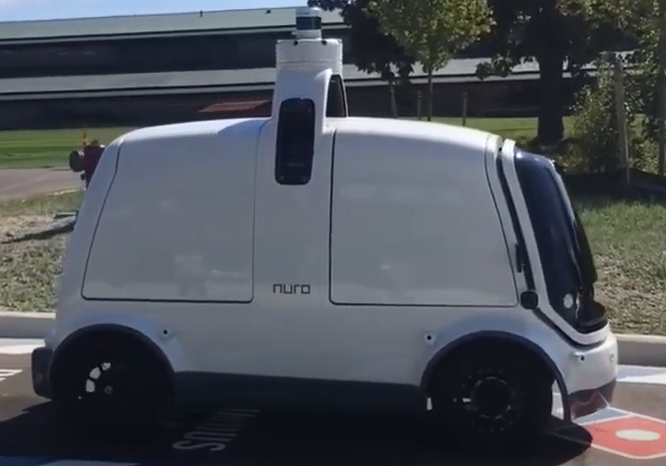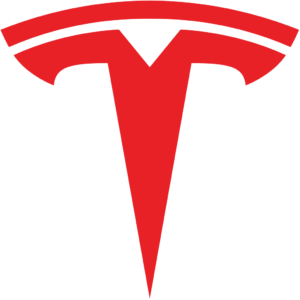These matters caught my eye recently: Tesla Superchargers … California’s electric vehicle “promotions”… A powered airplane with no moving propulsion parts … Nuro’s delivery robots
**** No more lifetime free Supercharging for buyers of new Tesla Model S and Xs.
With its recent round of price reductions Tesla giveth and taketh away. On the one hand, prices on each of Tesla’s Model Ss and Xs were cut by $5,000. But, as the economists say, on the other hand, Tesla removed the lifetime ownership perk of free Supercharger use for new buyers of these models. I see this as no big deal for most prospective buyers – indeed it opens up the market to even more buyers who value more highly the $5K drop in the price of the vehicle.
This move should be also considered with Tesla’s recent move to time-of-day-based Supercharger rates. On approximately May 12, 2020 Tesla started billing time-dependent charging time rates at at least some of its Supercharger stations. 12AM to 4PM is $0.29 per kWh, 4PM to 9PM is $0.35 per kWh, and 9PM to 12AM is $0.29 per kWh. Idle fees – the time you leave your vehicle connected to the charger after its battery is fully charged will cost an additional up to $1.00 per minute.
There are several factors that lessen the impact of removing free lifetime Supercharging for new S and X owners. The average S and X owner is more likely to own a home and thus have available and use home charging. Remember that the majority of electric vehicle owners perform about 80% of their charging at home. Then too, Tesla batteries are becoming more powerful, offering a longer driving range, and a much longer battery life. This trend will be accelerated when Tesla places into production the changes in battery technology they will announce soon on their “Battery Day”.
Finally, let’s look at the math as to what $5,000 means in lost charging miles. Assume the current range of roughly 4.0 miles per kWh for Tesla Models S and X. Given the Supercharger rates above, assume the average Tesla owner Supercharger rate is $0.30 a kWh. So the charging cost is 7.5 cents a mile. Thus $5,000 represents a maximum of 66,667 miles of free driving for S and X owners under Tesla’s previous policy. If the average S or X driver drove 15,000 miles a year and charged their vehicle 80% at home, that would be 3,000 miles per year when they would likely use a Supercharger. 3,000 X $0.075 is $225 a year in Supercharger fees for the average S or X owner in this scenario.
In other words if you charge mostly at home due to convenience and low cost (average of $0.13 per kWh, not $0.30 per kWh) you are not likely to ever use $5,000 of Supercharger miles, and for that you save $5,000 on the vehicle at an average cost of $225 a year. I think a prospective owner of an S or X would take that deal unless they were a travelling salesperson, or they wanted to operate a ride sharing service. Of course, if the Model S or X owner has solar power and battery storage installed in their home, their entire charging scenario becomes largely moot – – their vehicle charging is free and actually the solar power generated can be a potential source of revenue after the initial investment.
**** Once again California leads the way in electric vehicle “promotion”.
Two recent proposed pieces of legislation for vehicle owners operating in California spell change for the vehicle owners as well as electric vehicle promotion and sales for EV manufacturers.
A CleanTechnica article reported on the intentions of California’s Air Resources Board (CARB) to mandate that a certain percentage of a truck manufacturer’s sales in California – if they sell more than 500 vehicles a year in the state — must be battery or fuel cell-powered vehicles, starting in their model year 2024. There are at least ten companies and many brands that meet this criteria including “Daimler (Freightliner, Thomas Built Buses, Western Star), Paccar (Kenworth, Peterbilt), Navistar (International, IC bus), Ford, GM (Chevrolet, GMC), Fiat Chrysler (dodge), Nissan, Isuzu, Toyota (Hino), and Volvo Group.”
An earlier version of the bill was deemed not tough enough during its public review. This revised tougher bill is a huge step forward for California, and if history is any precedent, will show other states a model for cleaning up their environments. However, more, and even tougher steps are needed to have an even larger impact in a shorter time period.
In the same legislative spirit, a GreenCarReports article states that California legislators are moving forward to mandate that by 2023 new air standards would pose tougher emission limits on ride-hailing companies. CARB would raise the mandated electric vehicle miles travelled from zero now to either 32% or 51% of total ride hailing company and driver miles by 2030 (think Uber and Lyft), thus lowering emissions for those miles traveled by roughly 80% by 2030.
This proposal originated when data showed that 39% of ride-hailing trips were deadhead miles – just the driver with no passenger(s). That’s no surprise to any urban dweller who watches their city’s streets clogged with Uber and Lyft vehicles parked or “cruising” waiting to pounce like vultures at the first hint of a client. There is even a possibility that California could require all ride-hailing companies to have all-electric vehicles by 2030. Again, no surprise to any Tony Seba fan or reader of this blog. For one thing, there won’t be many, if any, ICE-powered cars to buy in 2030! Kudos to California for keeping the pressure on for a cleaner environment!
**** Moving parts count reduction excellence – in an airplane, no less!
Given my two recent parts count reduction blogs here and here, I couldn’t resist including this groundbreaking article from November 2018 in this post. The article describes engineers from MIT designing, building, and flying a powered airplane with no moving parts in its propulsion system. The five pound plane has a 16.4 foot wingspan and at least ten times has flown the full 197 foot distance inside a gym building. Propulsion is by an ionic engine that depends on a flow of ions between a positively charged wire and a negatively charged wire with a very high 40,000 volt charge between them. The plane carries a stack of lithium-polymer batteries to create the voltage between the positive and negative wires.
This airplane proved that the ionic propulsion concept was valid. While there has been no mention of further efforts with this experiment, you can be sure that somewhere in the world further development of this idea is proceeding. It is likely that the US Department of Defense is extremely interested in this concept, as well as NASA. Now that the existence of UFOs seems to be confirmed (at last) by recently released US Navy videos, might it be that since no visible means of jets or propellers are visible on these UFOs that this ionic engine principle is what drives them at speeds and a maneuverability that are incomprehensible to us currently. As Elon Musk often says: “The best [moving] part is no [moving] part!”
**** Have you been served by a Nuro yet?
We discussed in our recent Amazon blog Amazon’s desire to automate the entire home delivery process, and the fact that the “last mile and/or last 100 feet” had not been effectively solved by Amazon or anyone yet. There are many startup autonomous delivery companies vying for market leadership in the local area home delivery space. One of the most promising is Nuro, started in 2016 by two engineers who had worked at a high level on Google’s self-driving car project. Nuro initially piloted its delivery system and autonomous driving capability using Toyota Priuses with a human safety driver. Now they have moved on to their unmanned R series vehicles.

Nuro is focused solely on the goods delivery business. Their robotic R1 and R2 battery-powered delivery vehicles have no provision for a human driver (or passenger). Smaller than a Smart car, the R2 weighs about 1,500 pounds, is just over six feet tall, and is a bit less than four feet wide. Currently the R1 and R2s’ speeds are limited to 25 miles per hour. The R1 and R2 each have two curbside lockable delivery compartments each reported to hold about six bags of groceries. However, with replaceable inserts in each compartment, the number of lockable compartments could be expanded in more but smaller compartments by a two-step unlock process – the outer door, than an inner one.
Nuro’s R1 and R2 are meant for curbside or driveway delivery only where the customer has to be there to receive and unload the vehicle. The company’s claim is that there is a huge demand in neighborhoods for this kind of delivery system and that eventually they or someone will solve the “last 100 feet” problem that is so location-housing design-specific. Nuro has temporary approval to operate their autonomous delivery vehicles on public roads. Reportedly, the vehicles’ battery charge is sufficient to last an entire workday.
Currently Nuro is working with a minimum of three companies in different areas of home delivery and in different test locations. Their first delivery client is Kroger’s grocery chain. You can watch a video here of their first grocery delivery for Kroger.
Nuro is also working with Domino’s Pizza in a pilot in Houston. Just recently, a recent Associated Press article describes CVS Health’s agreement to pilot the use of Nuro robots for delivery. These trials will be first carried out in the Houston, TX area to deliver CVS prescriptions “and other products”.
A CVS customer can specify its Nuro delivery service. When the Nuro vehicle reaches the customer’s home, or as close as it can get, it pages the customer who then has to come out, unlock the Nuro container compartment with a code provided by CVS, and extract their goods. Obviously, this service will not be for everyone, or for every home or apartment destination. Nor is it clear that every state will approve of these small delivery vehicles that could be hijacked or broken into while delivering prescription goods.
In the short term, I see three problems that Nuro will have to overcome as they grow. The first is their vehicles’ slow 25 mph speed that will limit their working radius and the number of trips the vehicles can make per day. As Nuro’s autonomous driving capability improves (made much easier because there are no humans on board), Nuro can gradually boost their vehicles’ top speed.
Coupled with the speed improvement, the Nuro vehicles will also have to be able to work in more demanding weather condition than is possible now. This too can be progressively improved, especially given the full complement of autonomous driving sensors Nuro uses.
The third problem seems more limiting in that for any sizeable grocery order, there are only two compartments in each Nuro R1 and R2 vehicle. That means their vehicle can only serve one or two customers at a time per trip. In the short term, using more but small compartment divisions (inside the two large compartment doors) may be an answer for some kinds of goods. In the long term, either a larger number of exterior doors can be designed for the vehicle, or entirely new vehicles can be designed in a larger size, with a wider range of external door designs and insertable internal compartment choices.
From time to time, we’ll be looking at other vehicles from other startups such as Nuro’s R2 models. In the meantime, rejoice that Nuro is working with Domino’s Pizza chain to deliver pizzas autonomously, hopefully in your neighborhood. No more need to tip the driver!
Photo courtesy of Pixabay
Your feedback in the form of comments or suggestions are welcome in the comment window. Thank you for following my blogs on this site and for participating in my blogging community.




